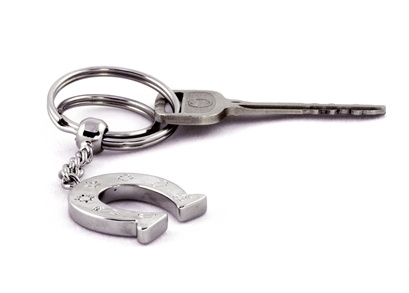
Vehicle manufacturers design automotive door locks to operate in multiple forms and perform various functions. The current trend is to manufacture vehicles with only a drivers side key lock, while some high-end vehicles have no visible locks at all. This means there are multiple systems to check when a door lock fails. Not only can the key and tumbler assembly fail, so can assorted lock rods or rod retainer clips, the door latch-lock assembly, or the power door lock actuator.
Lubricate the door lock tumblers by using an aerosol can equipped with an extension straw to spray a small amount of graphite based lubricant into the lock opening. In some cases the brass tumblers become sticky and will not release from their interference position. Gently work the key back and forth to see if the lock works. If not, give the lubricant time to work, so wait 10 minutes and try again.
Inspect the key for excessively worn areas. If the peaks and valleys are eroded, a new key will need to be cut. Do not duplicate the worn key. If no original key or key code is available, provide proof of ownership along with the Vehicle Identification Number to a dealership that sells new vehicles of the same make. The dealer can cut an original, replacement key without the wear defects. In many cases this repairs the problem.
Remove the inner door panel. Be thorough searching for hidden retaining screws and clips. Look behind switches, under arm rests and under side-view mirror covers. Remove all the screws or retaining clips.
Gently pry on one corner of the door panel to release the self-retaining door panel push-pins. Do not force the panel off if it fails to release, instead look further for hidden mounting screws. Disconnect any wiring harness connectors, and remove any additional mounting screws. Remove the door panel and set it aside.
Using a flashlight, Inspect the lock cylinder. Attached to the back of the cylinder are one or more lock activation rods that go to the lock. Make sure they are secure and properly aligned. Inspect the lock assembly. The lock is built into the door latch. The latch is midway down the door and clicks onto the door striker when the door is closed.
Inspect the power door lock motor. The power door lock motor drives a short rod to operate the lock-unlock mode. Unhook the rod on the power lock motor. Test the key for proper operation. If it now works, the power lock motor is defective. If it does not work, the door lock assembly is faulty.